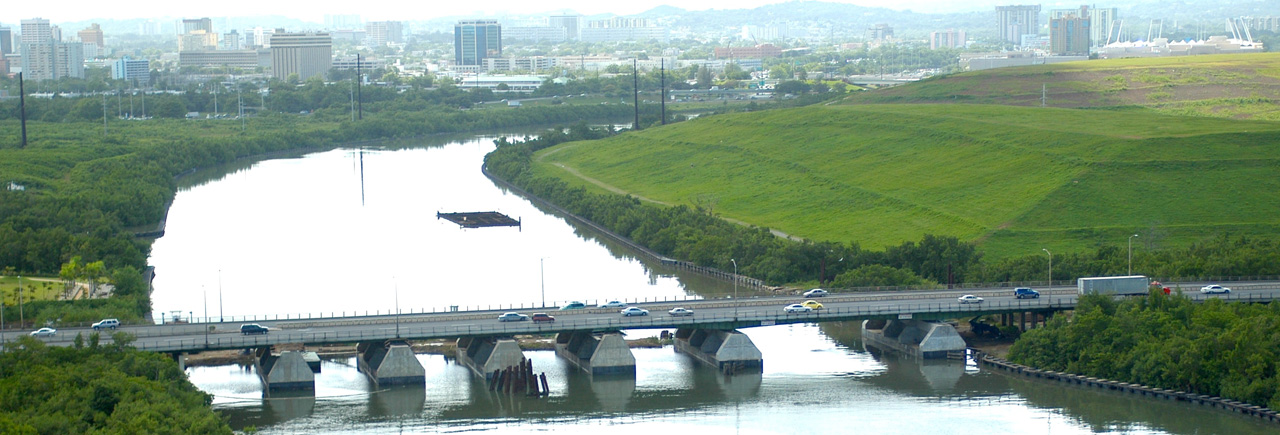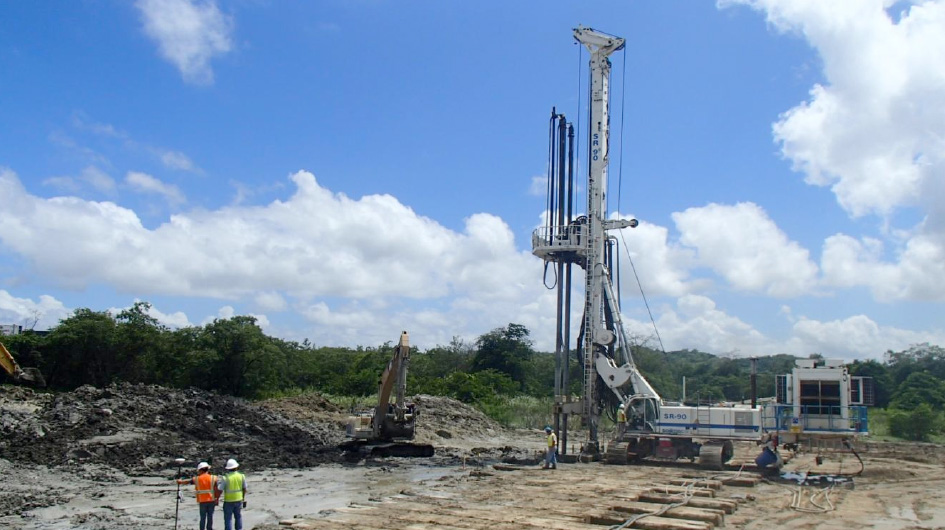2012 - Rio Puerto Nuevo Flood Control Project San Juan, PR
The portion of the Rio Puerto Nuevo Flood Control Project located between PR-2 Highway (Expreso Kennedy) and the Horizon Lines shipping facility of the San Juan Industrial Area is named Bechara Channel Middle Section. The purpose of the project is to construct a major drainage channel, approximately 800 ft long x 150 ft wide x 20 ft maximum depth, to connect the existing industrial channel south of the work area with the existing concrete box culvert located north, both built in previous phases of the project. The lack of this connection often causes high water that affect businesses and activities located upstream. Due to the adverse geotechnical properties of the soils underlying the designed channel, the need to lower a 90-inche forced sewer main, and to meet the seismic criteria, the Army Corps of Engineers elected to improve the soft foundation soils by the Soil Mixing methodology.| Owner | US Army Corps of Engineers |
| Contractor | Dragados USA |
| Engineer | URS Corporation |
Wet Deep Mixing Method (DMM) was proposed to accomplish the designed stabilization and provide the necessary support to the excavation and construction of the drainage channel.
The soils to be improved consisted of sandy fill, soft clays, organics and stiff, plastic clays. A soil investigation campaign, followed by a Bench Scale Mixing Program (BSMP) and a Full Scale Field Test (FSFT) were performed during pre-construction stage to assess soil properties, select binder type and dosage, and disclose the most suitable combination of injection parameters to improve the different soil layers. Production started at the end of August 2012 and was completed in October 2013; over 3,000 DMM elements were installed to a maximum depth of 57 feet below ground and a required area replacement ratio of 100%, which led to a treatment total gross volume of approximately 120,000 cubic yard.
The soils were mixed in situ with predetermined quantities of binder, (Portland cement). The grout was injected at the bottom of the drilling rods at different rates of pressure and flows to address the peculiar properties of each soil layer. Appropriate installation parameters were monitored real-time during production through SOILMEC’s Drilling Mate System. The DMS allowed also the computer controlled installation of the DMM elements and the immediate QC of the constructed element through a data email sent upon completion.
Three wet grab samples (each composed by 4 specimens) of freshly mixed columns were required on a daily basis for verification of the acceptance criteria, as well as twelve full depth coring of hardened element upon completion of 75% of production; over 700 wet grab and over 2,500 specimens were tested for Unconfined Compressive Strength assessment. The ground improvement was successfully completed as demonstrated by the results of the QC/QA program despite some difficulties due to a considerable amount of obstructions and the need of redesigning portions of work that affected logistics and sequencing of the activities.
The soils to be improved consisted of sandy fill, soft clays, organics and stiff, plastic clays. A soil investigation campaign, followed by a Bench Scale Mixing Program (BSMP) and a Full Scale Field Test (FSFT) were performed during pre-construction stage to assess soil properties, select binder type and dosage, and disclose the most suitable combination of injection parameters to improve the different soil layers. Production started at the end of August 2012 and was completed in October 2013; over 3,000 DMM elements were installed to a maximum depth of 57 feet below ground and a required area replacement ratio of 100%, which led to a treatment total gross volume of approximately 120,000 cubic yard.
The soils were mixed in situ with predetermined quantities of binder, (Portland cement). The grout was injected at the bottom of the drilling rods at different rates of pressure and flows to address the peculiar properties of each soil layer. Appropriate installation parameters were monitored real-time during production through SOILMEC’s Drilling Mate System. The DMS allowed also the computer controlled installation of the DMM elements and the immediate QC of the constructed element through a data email sent upon completion.
Three wet grab samples (each composed by 4 specimens) of freshly mixed columns were required on a daily basis for verification of the acceptance criteria, as well as twelve full depth coring of hardened element upon completion of 75% of production; over 700 wet grab and over 2,500 specimens were tested for Unconfined Compressive Strength assessment. The ground improvement was successfully completed as demonstrated by the results of the QC/QA program despite some difficulties due to a considerable amount of obstructions and the need of redesigning portions of work that affected logistics and sequencing of the activities.
Request information
38 Third Avenue, Charlestown, MA 02129 U.S.A.
Related Services
Related Technologies
Download


